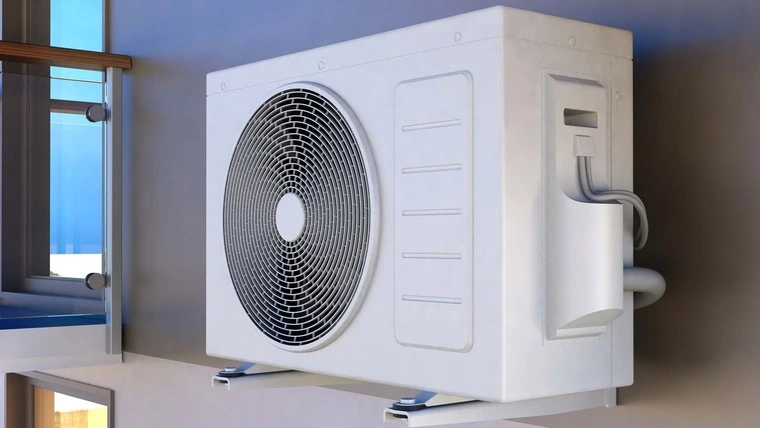Freons are the name of refrigerants used in air conditioners, split systems, and various refrigeration equipment. They help create optimal temperature conditions in the house. Today we will talk about some important questions related to freon. They are often asked not only by beginners but also by experienced users of home split systems.
Is there freon in the air conditioner from the factory?
All household air conditioners and split systems are supplied with freon. They have a factory filling, like the same refrigerators. The volume of freon is calculated for a certain length of the route – a system of copper pipes through which the refrigerant circulates.
In most cases, the calculation is based on a standard length of three to five meters. If the route is extended during installation, additional freon will be required. After all, the entire circuit must be filled.
Each split system model has a freon brand, its volume, and the recommended length of the line for this volume in the passport. It is worth carefully familiarizing yourself with the characteristics of your air conditioner model.
“During installation, it may turn out that there is no freon in the system. This is a manufacturing defect, and then the model is subject to replacement. Fortunately, such cases are rare.”
Can freon leak from an air conditioner?
The answer is yes. There are several reasons why this might happen.
Mechanical damage.
For example, a strong impact during transportation, bending of tubes with the appearance of cracks, etc.
Oxidation of compounds.
Occurs if low-quality materials were used during installation. Or if the equipment is used in extreme climatic conditions.
Poor installation.
For example, the nuts are not tightened completely or are overtightened. Or the flaring of the pipes is poorly done. Freon can also leak if the pipes are bent or the copper soldering is poor.
There is also such a thing as natural freon leakage. Everything is simple here: all gases tend to evaporate. Often in the split system passport, the manufacturer indicates the approximate percentage of natural leakage. On average, it is 5-8% per year. There are cases when split systems operate without refueling for eight to ten years. That is, the circuit is completely closed and freon does not leak out in any way. However, this is rare. Here everything depends on the quality of installation, factory assembly, and components. On average, refueling is carried out every three years.
What happens if you take the wrong refrigerant?
Today, there are more than fifty different refrigerants. However, in-home split systems (air conditioners), only two types are mainly used – R410 and R32. Less commonly used are R407C, 134a, 404a. The characteristics of each model indicate the freon marking. In case of refilling, it is better to use a similar refrigerant.
Freons have different chemical compositions, and therefore different properties. The boiling point, heat capacity, operating pressure, etc. are different. In case of radical replacement of freon, it will be necessary to change part of the system: capillary tubes, compressor, etc. This is an expensive procedure.
Using the wrong freon can lead to its leakage. The fact is that it may be poorly compatible with the equipment (seals, etc.). In addition, the refrigerant additionally contains oil for lubricating the system. If incompatible, the compressor may fail.
However, certain brands of freon are compatible with each other. However, for replacement, you need to follow several rules. You can read more about this in our article.
What happens if you don’t top up the freon on time?
In split systems, it is necessary to maintain the required level of freon. That is why it needs to be refilled every few years. The reason is not only that the equipment starts to work worse.
Oxidation
Without the refrigerant (freon), which contains oil for lubrication, the tubes will quickly oxidize. In addition, the circulation of freon in a closed circuit does not allow condensation to accumulate. This also protects the air conditioner.
Wear of components.
If there is not enough freon (or none at all), there will be a heavy load on some elements of the split system. The compressor relay, starting capacitor, and voltage transformer can simply break.
Compressor failure
Freon circulating in the circuit cools the compressor. Without refrigerant, it will quickly overheat. The automatic system (overheating protection) will constantly turn it off. Over time, the compressor simply will not withstand this operating mode and will fail.
Energy consumption
If there is a lack of freon, the cooling capacity will drop sharply. The split system will take longer to create the set temperature. Accordingly, energy consumption will be overestimated.
In case of a complete freon leak, you need to immediately refill the air conditioner. This should be done within 24 hours. Otherwise, an expensive split system can suddenly turn into a “brick”.
How do you know when it’s time to refill your air conditioner?
Several signs indicate that there is not enough freon in the system.
- Weak cooling capacity. The split system takes a long time to cool the room to the set temperature. Even when trying to set the minimum temperature, the airflow is still warm.
- Burning smell. Due to a lack of freon, the compressor and other components overheat.
- Ice on the valve of the outdoor unit. If there is an insufficient amount of freon, its evaporation temperature decreases. The radiator begins to freeze. The same can happen with an excess amount of refrigerant.
- Error icon on the indoor unit display. Some split system models have a leak protection function. That is, the sensor, having determined that there is not enough freon, will turn off the split system and display a special code on the display. For example, in Gree air conditioners, this code looks like F0.
Is it possible to refill the air conditioner yourself?
You can refill the air conditioner yourself. If you have the tools, you can do everything according to the instructions on the Internet. But there are a few nuances.
Equipment
For refilling, you need a set of keys, a vacuum pump, and a cylinder of freon. You may need a rolling tool in case a crack is found in the tube. The cost of a complete set for installation and refilling is quite high.
Access to the outdoor unit
It all depends on where the unit is installed. Often the unit is located several meters from the window, and it is not easy to get to it. If the outdoor unit is hanging on one of the floors of a high-rise building, it is better not to risk it: contact high-rise installers.
Skills
During refueling, many different procedures are carried out related to pressure testing and leak testing. You need to know to what level to fill the freon. Need to close the valve in time. You need to check the system for errors… And these are only some of the important points.
When is the best time to refill freon?
On the one hand, the weather is often unpredictable. So it is impossible to choose a specific time of year for filling the split system. However, several general recommendations do exist.
Winter
Freon can be refilled at low and even sub-zero temperatures (minus 5-10 C°). Provided that there is no snowfall, and the refrigerant cylinder is indoors. However, changing freon in the cold season is not a pleasure. On the other hand, the cost of installation/refilling in winter is usually lower. Everything is simple here: it is not the season.
Spring/autumn
The best option is to install or refill the air conditioner at a temperature of 18-20 C° and dry weather. Pros: comfortable temperature conditions and low cost of work. Cons? There are none.
Summer
Not the best option, especially in the heat. The thing is that summer is considered the “high season” for installers. This means that the prices will be very high. In addition, the weather is not always suitable. For example, frequent showers or abnormal heat, in which it is impossible to carry out work.
Well, the main general rule sounds simple. The air temperature should be comfortable, and the air humidity should be as low as possible.



